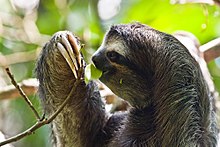Today is the one of the
most important day for our Nature. Today entire world celebrates “World Animal
Day”. World Animal Day is an international day of action for animal rights and
welfare celebrated annually on October 4, the feast day of Francis of Assisi,
the patron saint of animals.

To help protect and save our Mother Nature we all
should take care of the animals and birds that are wondering near our houses.
Due to human evolution and rapid industrialization there are so many animal species
which are extinct and many of are Endangered.
It’s our duty to protect each of them because human cannot survive alone in the
Nature without these animals, birds and most importantly the plants. So today
we will decide to care for these animals and birds by many ways. For example we
will start using eco-friendly bags instead of leather bags which will prevent
killing of cows and buffalos for their leather. Also you can have some water
pots placed in your balconies and on terraces so that birds can get drinking
water during summer seasons. The most importantly all the parents should give awareness
to their Childs regarding the issues with the animals and birds in our Nature.
As an initiative I will
post information of some of the top endangered
species from India. Today we will get familiar with The Indian pangolin.
The information is taken from Wikipedia.
The Indian pangolin

The Indian pangolin,
thick-tailed pangolin, or scaly anteater (Manis crassicaudata) is a pangolin
found in the plains and hills of India, Sri Lanka, Nepal and Bhutan. It is not
common anywhere in its range. Like other pangolins, it has large, overlapping
scales on its body which act as armor. It can also curl itself into a ball as
self-defense against predators such as the tiger. The color of its scales
varies depending on the color of the earth in its surroundings. It is an
insectivore that feeds on ants and termites, digging them out of mounds and
logs using its long claws, which are as long as its fore limbs. It is nocturnal
and rests in deep burrows during the day. The Indian pangolin is endangered by
hunting for its meat and for various body parts used in traditional medicine. Within
its range it is variously known as saal khapri (Chhattisgarhi), polusu pandi or
nela chepa (Telugu), eenampechi (in Kerala), azhungu or alangu (Tamil),
bajrakapta (Oriya), kaballewa (Sinhala), and chippu handi (Kannada).
.jpg)
The Indian pangolin is
a solitary, shy, slow-moving, nocturnal mammal. It is about 84–122 cm long from
head to tail, the tail usually being 33–47 cm long, and weighs 10–16 kg.
Females are generally smaller than the males and have one pair of mamma. The
pangolin possesses a cone-shaped head with small, dark eyes, and a long muzzle
with a nose pad similar in color, or darker than, it’s pinkish-brown skin. It
has powerful limbs, tipped with sharp, clawed digits. It is an almost exclusive
insectivore and principally subsists on ants and termites, which it catches
with a specially adapted long, sticky tongue. The pangolin has no teeth, but
has strong stomach muscles to aid in digestion. The most noticeable
characteristic of the pangolin is its massive, scaled armor, which covers its
upper face and its whole body with the exception of the belly and the inside of
the legs. These protective scales are rigid and made of keratin. It has 160-200
scales in total, about 40-46% of which are located on the tail. Scales can be
6.5–7 cm long, 8.5 cm wide, and weigh 7-10 grams. The skin and scales make up
about one-fourth to one-third of the total body mass of this species.

The Indian pangolin is
solitary, mostly nocturnal, and terrestrial. In habitats such as Sri Lankan
rainforests, they may be more arboreal, using their claws and prehensile tails
as supports to readjust four legs as they climb. These pangolins dig their own
burrows in the ground, at depths of 1.5–6 m; these are frequently under large
rocks and the entrance is often hidden with soil. When in danger, they roll up
into balls, with their large tails pressed tightly against face and belly to
help protect themselves.
Although the Indian
pangolin is protected by national legislation in many protected areas
throughout its range, it is heavily exploited for its flesh, scales, and skin.
Illegal demand has increased over the past 20 years. Populations are declining
due to hunting and poaching for both subsistence and international trade. As
they only have a single offspring per year, this high demand is starting to seriously
endanger populations. Various parts of the pangolin are valued as sources of
food and medicine. The scales are used as an aphrodisiac, or made into rings or
charms. The skins are used to manufacture leather goods, including boots and
shoes. The majority of hunting is carried out by nomads and trained local
hunters.
Pangolins are the most
heavily trafficked CITES-protected mammal. The two other Asian species of
pangolins (Manis javanica and Manis pentadactyla) are also declining due to the
market in Chinese traditional medicine.






























.jpg)
